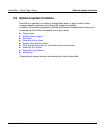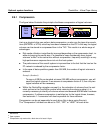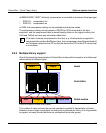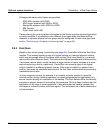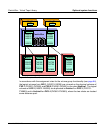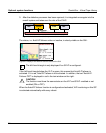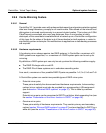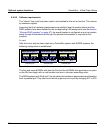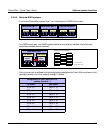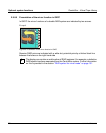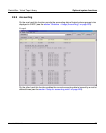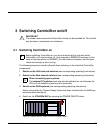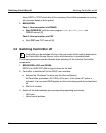
U41117-J-Z125-7-76 55
CentricStor - Virtual Tape Library Optional system functions
2.9.8 Cache Mirroring Feature
2.9.8.1 General
CentricStor V3.1 provides users with enhanced data security and greater protection against
data loss through disasters, promptly for all nearline data. Data stored on the internal hard
disk system is mirrored synchronously to a second cluster location. This is done via 2-Gbit
FibreChannel connections, also over long distances. Even if one location is totally
destroyed, all the saved data is available which is backed up on a CentricStor configuration
of this type. As the status of the data is at all times identical on both systems, a restart is
significantly quicker and simpler. No modifications to applications or data backup processes
are required.
2.9.8.2 Hardware requirements
A functioning mirror always requires two RAID systems. In CentricStor a maximum of 8
RAID systems are supported, i.e. a maximum of 4 RAID system pairs can be set up for
mirroring.
By definition a RAID system pair can only be set up when the following conditions apply:
● The RAID IDs begin with an odd ID.
● The RAID IDs of these systems are in unbroken ascending order.
As a result, a maximum of four possible RAID ID pairs are possible: 1+2, 3+4, 5+6 and 7+8.
A CentricStor system can contain two possible types of RAID mirror pairs:
– Potential mirror pairs
These pairs do satisfy the above-mentioned hardware requirements, but secondary
caches (mirror caches) must also be provided by a corresponding LUN assignment
(see the section “Mirrored RAID systems” on page 57). This is done by customer
support.
Potential mirror pairs can be recognized in GXCC by a thicker, black separating line (see
the section “Presentation of the mirror function in GXCC” on page 58).
– Genuine mirror pairs
These pairs satisfy all hardware requirements. They contain primary and secondary
caches (section “Mirrored RAID systems” on page 57) and are identified in GXCC by a
white dot (see the section “Presentation of the mirror function in GXCC” on page 58).



